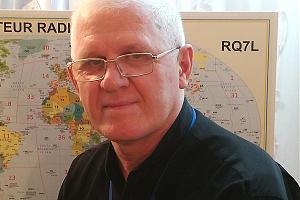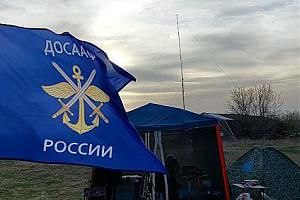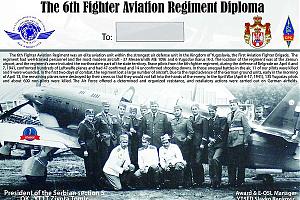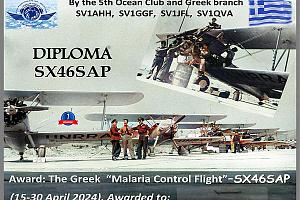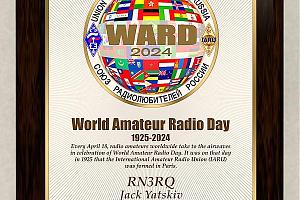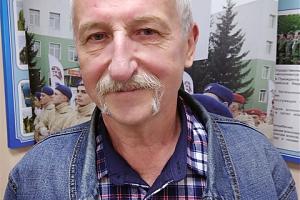AMSAT NEWS SERVICE BULLETIN 348.01 FROM AMSAT HQ SILVER SPRING, MD, DECEMBER 13, 2000 TO ALL RADIO AMATEURS BID: $ANS-348.01
AO-40 command stations have been quite busy lately as general housekeeping tasks, system testing and orbital changes have been underway with the complex circuitry onboard AMSAT OSCAR-40.
AMSAT-DL President (and P3D Project leader) Dr. Karl Meinzer, DJ4ZC, and AMSAT-NA President Robin Haighton, VE3FRH, informed ANS of the current status:
AMSAT OSCAR-40 status report / December 13, 2000 ------------------------------------------------------------------------
Nearly four weeks have now passed since the launch of Phase 3D - and there are both good things and bad things to report.
Immediately after separation, we could not receive the 70-cm transmitter. Consequently, we programmed the IHU-2 to act as repeater and use the V-band middle beacon as our main downlink. In addition, the two S-band transmitters have been operated occasionally, but the geometry within the orbit must be right to have the antennas point in the general direction of Earth. This limits the use we can make of S-band.
The main activity so far for the command stations was to learn to fly the spacecraft and to prepare it for the first burn with the 400 N motor. This required a reorientation, as the satellite must point opposite to the perigee orbital speed vector - and a spin-up to about 9 rpm was needed. In view of this ongoing work, it was decided to postpone the analysis of the problem with the 70cm transmitter to sometime after the first burn. The reorientation of the spacecraft turned out to be more time-consuming than initially assumed. We had two problems to solve:
1. As we neared our firing attitude, the geometry was very poor for producing direction changes of the spin-vector. The magnetic field of the Earth is nearly perpendicular to the spin axis meaning that we can change spin easily, but not direction. It turned out that rounding errors in the software of the IHU were in the same order of magnitude as the desired spin-change. Thus, reliable control was not possible. Careful tweaking of the parameters used in the IHU finally enabled us to solve this problem.
2. The geometry was also poor in terms of attitude determination by our sensors as the Earth and Sun are viewed almost from the same direction. In fact, for a certain time the Earth sensor was blinded by the Sun and delivered no useful data at all. The YACE camera (in conjunction with the IHU-2) came in very handy here, taking pictures of the Earth at strategic times. We actually used YACE as another sensor looking to the top of the spacecraft. It gave us badly needed additional data.
The IHU-2 also played a vital role in processing and storing these pictures. Unfortunately, it turned out that it was not as reliable as the IHU-1; every one or two days it crashed. This results in the beacon transmitting only a weak carrier (no modulation) until the IHU-2 is manually reset from the ground. So far this has posed no real problem, but it is a nuisance. We now have some data of how the memory is corrupted by radiation.
Eventually, we hope to install additional software in the IHU-2 which allows us to avoid (or at least automatically recover from) these crashes. But this has to wait until things get a bit quieter. Until that time we will have to live with IHU-2 crashes, which seem to be caused by hard radiation and typically occur when the satellite comes out of perigee and again enters the radiation belts.
Around Sunday, December 10th we had finally reached the proper orientation and spin for the first 400 N motor burn (to take us to 50,000km apogee altitude). After reviewing the various constraints it was decided to execute this burn on Monday, December 11th in the perigee of orbit 50/51. The necessary program was uploaded - this is an automatic sequence since the spacecraft at burn time is at the equator with only 600 km altitude - and no command stations would be in contact with the satellite.
Perigee on orbit 50/51 came and went - but the burn did not take place. The stored telemetry was analyzed and we learned that the sequencer went through all the necessary steps but there was no helium pressure and consequently no engine burn (helium pressure is needed to open the fuel-valves).
On Monday, December 11th the situation was investigated and we found the pressurization command was not resulting in any action. Initially the investigation concentrated on a software discrepancy, which may have existed between the test software used in Kourou and the command version used for flight. We determined that this probably was not the cause - the valve(s) simply refused to open. We experienced a similar problem during the test phase of P3D, and one of the helium valves was repaired as a consequence. All the indications are that we were again having this type of problem - which may be caused by the age of the components. Our command stations then executed multiple open and close commands, which eventually got the helium flowing, but we also noted that the helium flow was almost an order of magnitude less than required. Still we did build up pressure in the tank (to nominal) and we then programmed the spacecraft to perform the burn on Monday evening.
This time the burn started properly, but there were some anomalies in the telemetry indicating that the burn did not stop at the programmed time, but lasted almost 3 minutes longer. Thus, we have now achieved an orbit with about 60,000 km apogee altitude. For our ultimate plans this is no problem, we would have used the electric propulsion anyway to further increase the perigee.
One of our command stations, James Miller, G3RUH, has written a data collection program for IHU-2, and we have a very detailed account of all events of this burn. A step-by-step analysis is under way, and we have some indications of the nature of the problem and possible ways to cure it - or at least to cope with it, provided the 400 N motor was not damaged by this event.
During the next days we will investigate this matter in detail. If we have a real problem with the 400 N propulsion system, we may need to change our strategy for achieving a useful final orbit. But it may also mean only that we have to observe a number of boundary conditions during following burns and that the situation may have no impact on the mission goals.
For the next few days no attitude changes are planned, and we will be able to start investigating the problem with the UHF transmitter. During these tests we will find out if we can operationally plan on using the 70-cm transmitter or not.
We are living exciting times!
Finally, we would like to express our compliments and appreciation to the command stations for the superb job they are doing. Each day they are facing new difficulties requiring a very large amount of time and dedication. They are doing a super job!
Dr. Karl Meinzer, DJ4ZC (and) Robin Haighton, VE3FRH President AMSAT-DL President AMSAT-NA
Stay tuned to ANS for additional bulletins from AMSAT, the official source for information on AMSAT OSCAR-40.
[ANS thanks AMSAT-NA and AMSAT-DL for this information]
/EX
---- Via the ans mailing list at AMSAT.ORG courtesy of AMSAT-NA. To unsubscribe, send "unsubscribe ans" to Majordomo@amsat.org
--- Regina-Tosser/2 v0.05b * Origin: ---=== RA9LO Station at MO27SC ===--- (2:5077/39) __________________________________________________________________
Alexander
RZ6HGG Stavropol E-mail:rz6hgg@skiftel.ru FidoNet: 2:5064/11.30 17 декабря 2000 г. 8:41:35
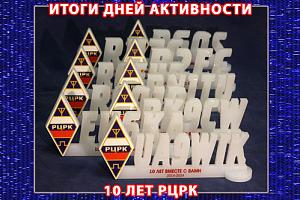
 126
126
